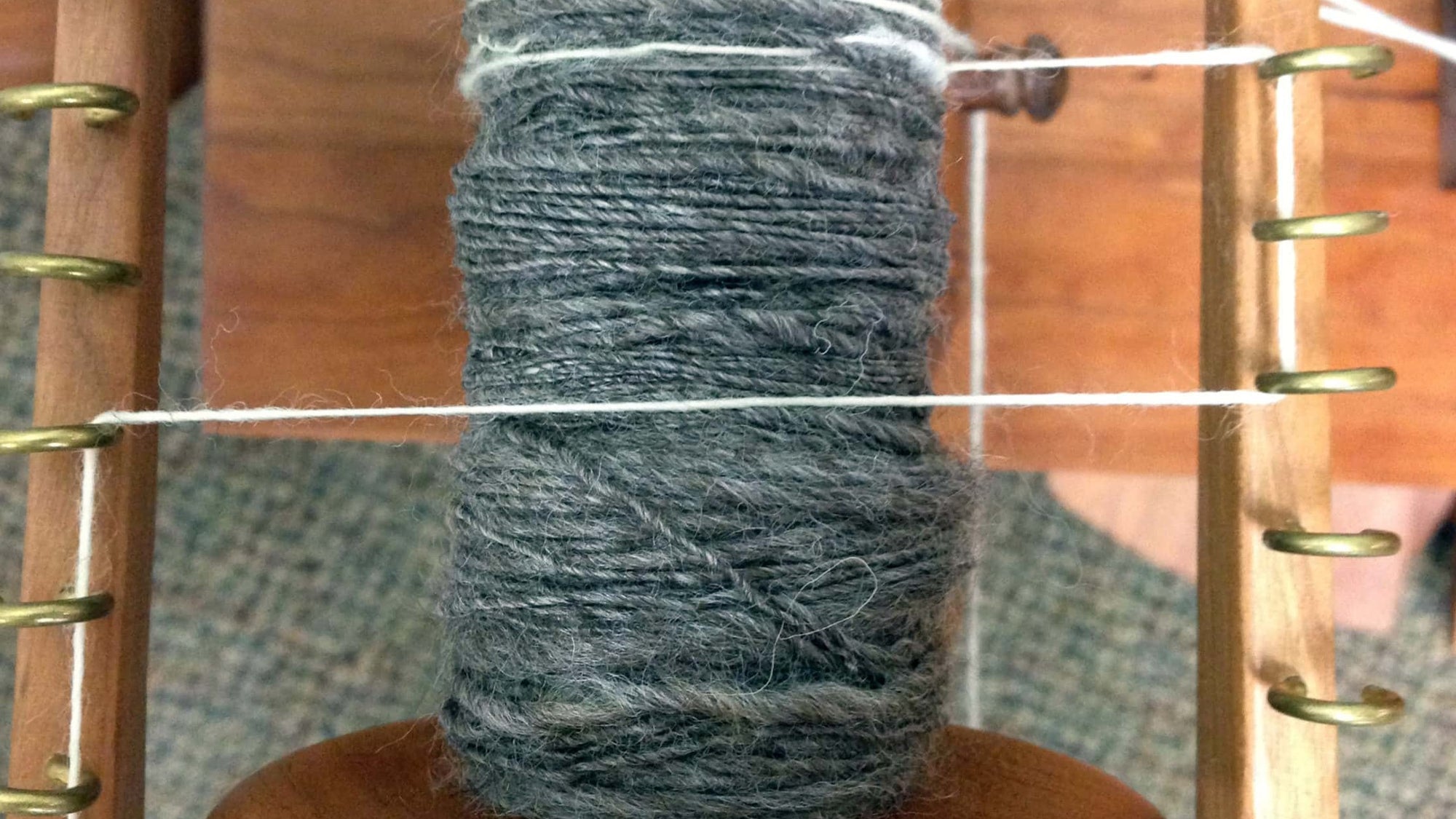By Maggie Casey
- Clean and oil your wheel. This is a good rule for any project, but especially when you want to spin a fine yarn. Take the bobbin off your flyer and use a paper towel to remove any old oil or grit from the flyer shaft. Then lightly oil the shaft so your bobbin spins freely. Oil the other parts of the wheel according to the manufacturer’s instructions.
- Fine yarns require more twist than thicker yarns so a whorl/pulley with a higher drive wheel ratio will add more twist in your yarn per treadle. Use the fastest whorl you are comfortable using.
- Adjust your wheel to have a very light draw in. First loosen the tension so no yarn is pulled into the wheel. On double drive, loosen the drive band, so no draw in occurs and then tighten the band by small adjustments until yarn is wound onto the bobbin with a gentle pull. If you are using Scotch tension, relax the spring on the brake band and then tighten with small turns until it is the right tension. My rule “loose till tight until it's right”.
- If you are having trouble spinning a fine yarn on an empty bobbin, try a half filled one instead or use pipe insulation wrapped around the bobbin core. If you are spinning on an empty bobbin, start winding the yarn on the hook farthest away from the orifice for a gentler pull on.
- If your yarn is still being pulled onto the wheel too fast or is thicker than you want and you are on your smallest whorl, try lacing the flyer. Instead of having your yarn move down one side of the flyer, take the yarn over to the other arm of the flyer so it crosses the bobbin and then goes through the orifice (see photo above).
- You can use any fiber preparation and drafting technique to make yarn for handwoven lace, but combed fibers and a worsted draw will show off the lace structure best. A balanced two ply yarn will show off the lace structure and hold up well as a warp yarn.
- Start spinning and make a sample card.
- Spin some yarn and when you like the way it looks and feels, check to see if it has enough twist. Pull out a length of freshly spun yarn from the orifice and hold it between your hands. Tug at it to see that the twist is holding the fibers together without any slippage. Then let that section of yarn twist back on itself to see how it looks as a plied yarn.
- If it pleases you, keep it as a sample of your plied yarn. As you spin, stop occasionally and pull out a section of yarn, let it twist back on itself and compare it with your sample.
- To measure the size of your yarn, wrap it around a ruler for an inch, making sure the strands are right next to each other, not on top of each other or showing any space between the wraps. The number of wraps is your wpi.
- Take some of this yarn and wrap it around a card 3 or 4 times. As you spin, stop and compare your yarn with your sample. Attach your plied yarn to your card, add info about the fiber and drive wheel ratio and keep it with your fiber.
- ALWAYS WEAVE A SAMPLE!!!
- Make sure you have enough fiber to weave a sample or samples before you start your project.
- Spin some yarn, ply it, set the twist or not and then weave a sample in the lace pattern you have chosen. Wash your sample and see if you love it.
- Does it meet your expectations? Is the yarn the right size after weaving and washing, does it need more or less twist? Have you chosen the best fiber for your project?
If you love your sample, spin some more yarn and warp your loom. If not, try another sample. It may take extra time, but you will learn a lot and your final project will make you proud!

